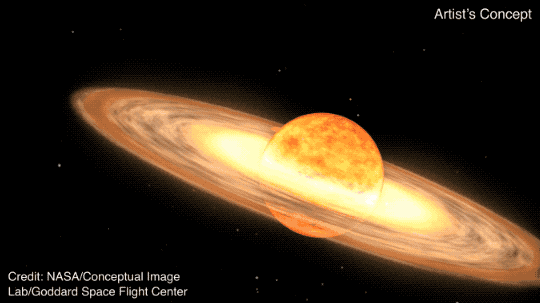Astronomers are running regular checks on a star system that currently requires a telescope to see because they expect it will soon be bright enough to view with the naked eye. According to one prediction, this could happen any time from now until September, although there’s reason to think we might need to wait another year.
One of the wonders of astronomy is the way, very occasionally, stars suddenly brighten spectacularly. When the star in question was previously too faint to see it can seem as if a new star has appeared, and before the invention of the telescope these became known as novae from “De nova stella”, Latin for new star.
Two and a half thousand light-years away in the direction of the constellation Coronae Borealis, such a brightening is anticipated.
The event will occur because what is known as T Coronae Borealis (T CrB) is not one star, but two. Although binaries are the most common star arrangement, this pair are a dangerous combination of red giant and white dwarf, both modestly more massive than the Sun. Over time the white dwarf’s intense gravity is pulling material off the red giant, creating an accretion disk a little like one circling a black hole.
When some of this material gets close enough to the white dwarf it becomes heated to the point where fusion ignites, leading to a surge in brightness. Most such brightenings are like those of an ordinary variable star. For example, in 2016, the T CrB system roughly tripled in brightness. However, since it was still barely visible in binoculars, few people cared.
In 1866 and 1946, on the other hand, the surge was something quite different, increasing several thousand-fold so that it was easily visible with the naked eye. It’s an event like this that astronomers are eagerly awaiting.
Some white dwarfs that are pulling material off their companions do so erratically, brightening only once in our observations. Others, known as recurrent novae, keep to a regular schedule. You may not have heard of them, because most recurrent novae are so far away that even when they brighten we can’t see them unaided, which makes T CrB is almost unique. At its peak in 1866 and 1946 it was almost as bright as Polaris, exceeding all but a few hundred stars. Only one other recurrent nova is visible with the naked eye at its brightest, and that one barely so.
The gap between T CrB’s two well-studied events was a little under 80 years. If that were to be repeated precisely, we’d expect the next event in late 2025. You can’t set your watch by a recurrent nova, unfortunately, so a few years either side would not be surprising.
Last year however, Professor Bradley Schaefer of Louisiana State University noted that prior to the 1946 event T CrB underwent some notable dimming, and has now done something very similar. Based on the timing from dip to peak, Schaefer predicted we should expect a show between February and September this year. Schaefer also did some impressive sleuthing to find evidence of what appear to be previous sightings in 1787 and 1217.
Although either previous report could be of something else that happened to be in the same part of the sky, Schaefer makes a strong case that these were most likely previous eruptions of T CrB, in which case we can be more confident to expect it soon.

Full sequence of how T Coronae Borealis might look as it goes from the system’s light being dominated by the red giant to the white dwarf’s explosion.
Image credit: NASA/Conceptual Image Lab/Goddard Space Flight Center
Nevertheless, Schaefer’s predictions on timing came with a dose of uncertainty, which seems to have been lost in some recent reports announcing we should be spotting the next peak by September.
T CrB is at a declination of 25 north, which means its visible for most of the year from Europe and North America. The exception is around September-November, when the Sun is annoyingly close to it in the sky, so we’d really rather it didn’t time its explosion then. Southern hemisphere observers have a considerably narrower viewing window.
When the explosion comes, NASA predicts T CrB should be visible to the naked eye for a few days, followed by a week or so where binoculars should still be sufficient. To find it, look between the very bright stars Vega and Arcturus, a little closer to the latter, and about seven degrees from Alphecca, which should be of similar or slightly greater brightness.
Source Link: This Year Could Be A Once In A Lifetime Opportunity To See A Nova